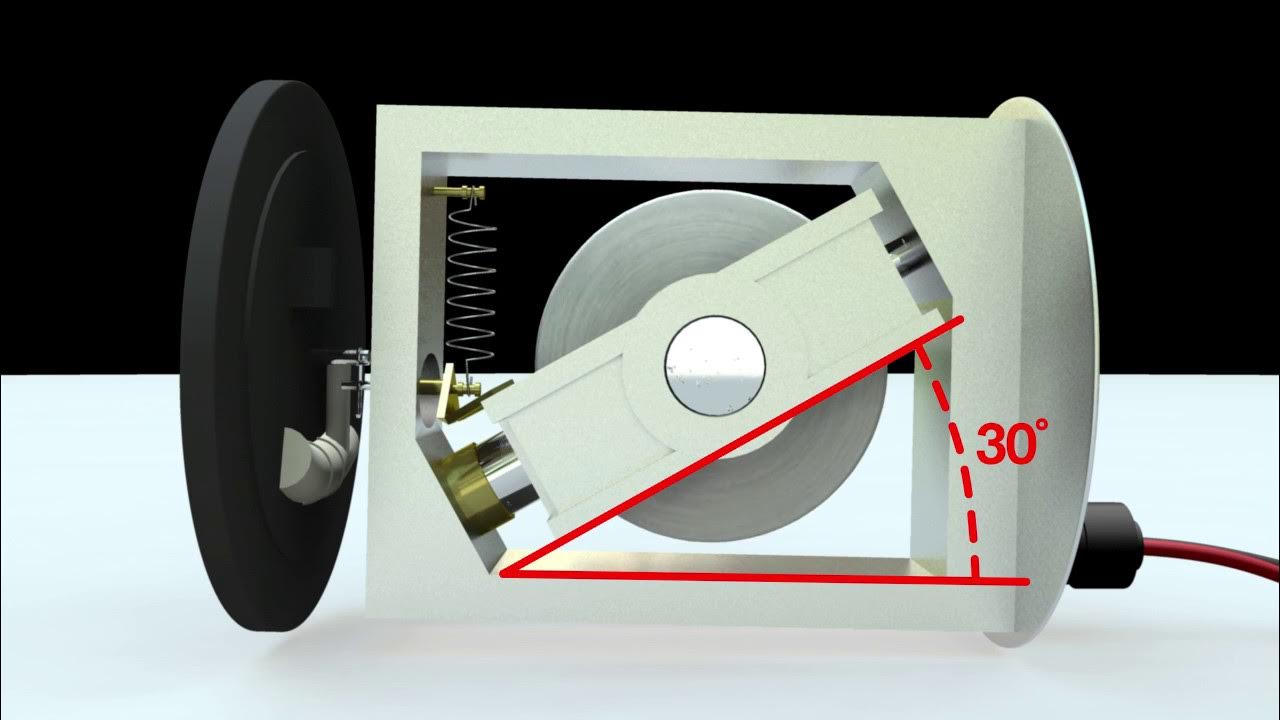The Attitude Indicator
Summary
TLDRThis video explains the workings and interpretation of the attitude indicator, also known as the artificial horizon, a key flight instrument in aircraft. It describes how the instrument shows pitch and bank angles, using gyroscopic principles to measure the aircraft's orientation relative to the horizon. The video covers various components of the attitude indicator, including the miniature aircraft, banking and pitch scales, and different designs. It also discusses internal functioning, limitations like gyroscopic wander, and safety features such as the caging knob and red flags for malfunctions. Overall, the video provides a comprehensive understanding of this essential instrument.
Takeaways
- 😀 The attitude indicator (artificial horizon) measures the aircraft's pitch and bank angles in relation to the horizon.
- 😀 The instrument operates on gyroscopic principles, with most light aircraft using a vacuum pump to drive gyros.
- 😀 The **pitch angle** represents the nose inclination (up or down), while the **bank angle** represents the wings' inclination (left or right).
- 😀 The miniature aircraft on the instrument shows the aircraft's attitude, with the artificial horizon dividing the sky and ground.
- 😀 The attitude indicator does not show if the aircraft is climbing or descending, but this can be determined with the vertical speed indicator.
- 😀 The bank angle is represented by a yellow bug and can be read on the upper scale, which marks 10, 20, 30, 45, 60, and 90 degrees.
- 😀 The pitch scale shows the aircraft's nose up or down, with long lines for 10-degree increments and short lines for 5-degree increments.
- 😀 Some attitude indicators include an **adjustment knob** to align the miniature aircraft with the horizon, but this should only be adjusted in straight and level flight.
- 😀 A **sky pointer** is a type of bank indicator that remains fixed and can cause confusion, especially for pilots used to conventional bank indicators.
- 😀 The gyroscope in the attitude indicator remains rigid in space, allowing accurate measurement of pitch and bank angles despite aircraft movements.
- 😀 Limitations of the attitude indicator include mechanical stops that prevent the gyro from rotating freely during excessive pitch or bank angles, leading to temporary instrument failure.
Q & A
What is the primary function of the attitude indicator in an aircraft?
-The primary function of the attitude indicator, also known as the artificial horizon, is to measure the aircraft's attitude in relation to the horizon, specifically in terms of pitch and bank angles.
How does the attitude indicator work based on gyroscopic principles?
-The attitude indicator works by using a gyroscope, which remains rigid in space due to its rotational stability, allowing it to maintain alignment with the horizon as the aircraft moves.
What are the two main angles that the attitude indicator measures?
-The attitude indicator measures two main angles: bank angle (the inclination of the wings in relation to the horizon) and pitch angle (the inclination of the nose of the aircraft in relation to the horizon).
How is the bank angle displayed on the attitude indicator?
-The bank angle is displayed on the upper part of the instrument, with a bank scale and markings for 10, 20, 30, 45, 60, and 90 degrees. The current bank angle is indicated by a yellow bug or indicator on the scale.
What is the role of the miniature aircraft in the attitude indicator?
-The miniature aircraft in the center of the attitude indicator represents the wings and nose of the aircraft, providing a visual reference for the aircraft's orientation in relation to the horizon.
What information does the pitch scale on the attitude indicator provide?
-The pitch scale indicates the aircraft's nose-up or nose-down attitude in relation to the horizon, with markings representing increments of 10 degrees for long lines and 5 degrees for short lines.
What is the difference between the turn coordinator and the attitude indicator?
-The attitude indicator shows the bank angle and pitch attitude of the aircraft, while the turn coordinator is used to determine if the aircraft is turning and how fast, based on the turn rate.
What is a sky pointer, and how does it differ from a conventional bank indicator?
-A sky pointer is a type of bank indicator that remains fixed pointing upward, while the bank scale moves to indicate the bank angle. This can be confusing, as the sky pointer moves opposite to the bank angle.
What is the purpose of the adjustment knob on some attitude indicators?
-The adjustment knob allows the pilot to align the miniature aircraft with the instrument's horizon to reflect the aircraft's attitude when flying straight and level, although it should only be adjusted on the ground or in VMC conditions to avoid errors.
What is gyroscopic apparent wander, and how does it affect the attitude indicator?
-Gyroscopic apparent wander occurs due to the Earth's rotation, causing the plane of rotation of the gyroscope to drift from the real horizon. This effect is most noticeable at the equator and can lead to incorrect attitude readings unless the gyro realigns with the horizon.
Outlines

Cette section est réservée aux utilisateurs payants. Améliorez votre compte pour accéder à cette section.
Améliorer maintenantMindmap

Cette section est réservée aux utilisateurs payants. Améliorez votre compte pour accéder à cette section.
Améliorer maintenantKeywords

Cette section est réservée aux utilisateurs payants. Améliorez votre compte pour accéder à cette section.
Améliorer maintenantHighlights

Cette section est réservée aux utilisateurs payants. Améliorez votre compte pour accéder à cette section.
Améliorer maintenantTranscripts

Cette section est réservée aux utilisateurs payants. Améliorez votre compte pour accéder à cette section.
Améliorer maintenant5.0 / 5 (0 votes)






